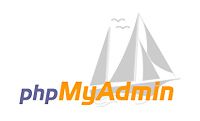Create a Database with cPanel and phpMyAdmin

Creating a database is one of the common tasks before building a new site with WordPress, Joomla or Drupal.
Luckily, phpMyAdmin and cPanel make this process easier than ever.
In this post, I’m going to show you how to create a new database and link to a database user. Let’s start…
Step #1. Login to cPanel
Go to your cPanel and login. It’s commonly reachable from www.yoursite.any/cpanel.

Step #2. Create a new database
- In the databases section, click in “MySQL® Databases”.

- In “Create a new database” section, type a unique name and click “Create database”.

If everything is ok, a successful message will come up in the next screen and you will see the full name of your database.
For example: something_mydatabase
- Click “Go back” button.

Step #3. Create a new database user
It’s common practice to create a unique user for each database.
- Scroll down to “Add a New User” section.
- Type a unique username, using as maximum 7 characters.

- Click “Password generator”.

Copy the generated password and temporarily save it. For example: paste the password into an open text file, so you can use later while installing WordPress, Drupal or Joomla.
- Check “I have copied this password to a secure location”
- Click “Use password” button.

- “Create user”.

If everything is OK, a success message will come up in the next screen and you will see the new username.
For example: something_myuser
- Click “Go back” button.
Step #4. Add a user to the database
Scroll down to “Add a User to a Database” section.
- Select the User and Database.
- Click “Add”.

- In the next screen, click “All privileges”.
- Click “Make changes”.

- A success message will confirm the user now has all the privileges over the database.

- Click the “Go back” button.

Sir,
Tell me. Where to find the username and password for cpanel
By default the details should match the master account for your contract. For many linux configurations this is “root” and then a password you may need to contact your host to find out your default host password.
Thanks
Daniel
thanks for the basic level information for account opening with image.
You are most welcome.